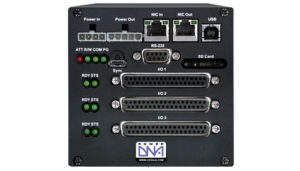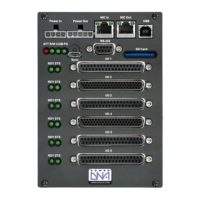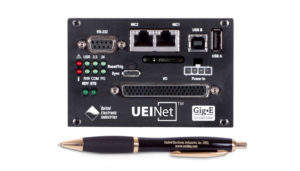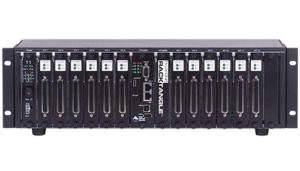United Electronic Industries High-Performance PC-Based Data Acquisition Solutions


United Electronic Industries (UEI) provides state-of-the-art instrumentation for a wide range of testing, operations and maintenance applications in the aerospace industry.
The company’s products are used in commercial airplane flight simulators; engine test cells for product development and production; system integration labs (SILs); airframe testing (Iron Bird Test Systems) for shock, vibration, bending and fatigue.
They are also suitable for avionics system testing in manufacturing and maintenance, repair and operations (MRO); flight recorders and data loggers; as well as avionics bridges.
Data acquisition instrumentation for the aerospace industry
UEI offers more than 60 I/O boards such as full avionics support, high-density and high-accuracy analog and digital boards.
Boards for synchro / resolver, and linear variable differential transformer (LVDT) / rotary variable differential transformer (RVDT) and variable reluctance / speed input are also available.
Each cube and rack chassis includes a computer processing unit (CPU), real-time operating system, ethernet interface and slots to enable I/O board installation. Each board is compatible with all UEI chassis options.
UEI boards are compatible with Windows, Linux and real-time operating systems. The software suite provides a simple and universal application programming interface (API) and supports all common programming languages.
The company’s chassis options fully support an extensive array of application packages such as LabVIEW, MATLAB and Simulink.
I/O boards for space applications
UEI’s I/O systems are critical elements in deployed space applications, from the launch pad to the International Space Station and everywhere in between.
Our products are ideal for simulation, hardware and software-in-the-loop (HIL/SIL) test labs, engine testing, and integration and onsite assembly.
UEI supports all aspects of launch pad control and monitoring systems, including rocket and payload transport monitoring and control, fuel conditioning, propellant monitoring, as well as rocket vehicle release systems.
Avionics gateway systems for data acquisition applications
The ultra-compact UEINet™ ethernet-based I/O module is suitable for a diverse number of distributed data acquisition and control applications.
Based on UEI’s popular PowerDNA® Cube architecture, this robust cube system is designed for applications requiring distributed I/O with a very small footprint (2.7in x 4.1in x 4in), and is packed with power and flexibility.
Each UEINet module comprises a core module and an I/O board from and the variety of UEI I/O boards enable configuration of one or more cubes to match specific requirements.
Software-agnostic technologies
UEI software-agnostic systems eliminate hardware compatibility and provide engineers with rugged reliability, flexible I/O options, and allows for peace of mind with long-term availability guarantee.
Products and Services

High-Performance 16-channel TX ARINC 429 Interface
The DNx-429-516 are 16-channel ARINC 429 communications interfaces for UEI’s popular Cube, RACKtangle and FLATRACK I/O chassis respectively.
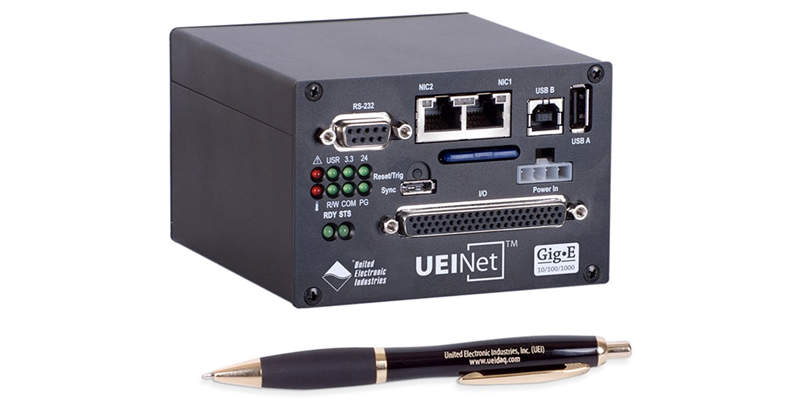
Ultra-Compact Single-Slot Data Acquisition and Control Cube
The UEINet chassis provides an ultra-compact, Ethernet based I/O module suitable for a wide variety of distributed data acquisition, control, and SCADA applications.
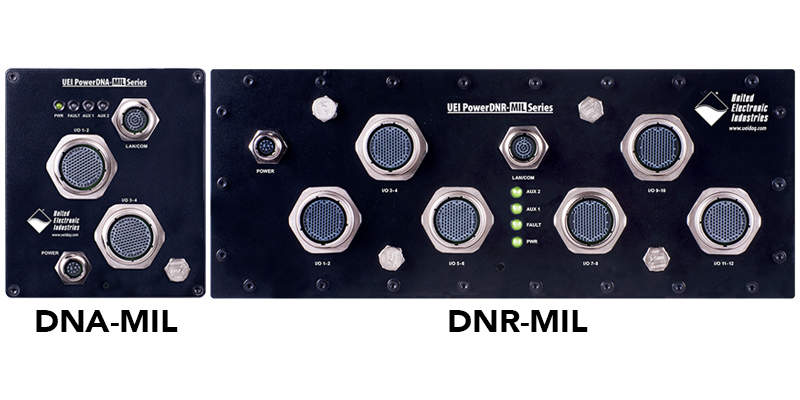
Rugged Mil/Aero Style 4-Slot & 12-Slot I/O Chassis
The DNA-MIL Cube and DNR-Mil Rack are ruggedised chassis that are easily configured as a stand-alone I/O controllers or embedded, programmed and hardened for integration with high density, multifunction data acquisition systems.

Dual-Channel MIL-STD-1553 Interface Board
The DNx-1553-553 is a high-performance, two-channel MIL-STD-1553 interface.

Two-Channel AFDX / ARINC-664 Interface
The DNx-AFDX-664 is a 2-channel AFDX / ARINC 664 communications interface, which includes the Boeing EDE protocol.
Related Projects
Press Release
United Electronic Industries (UEI) has announced the release of the DNx-429-516 ARINC 429 interface.
Read moreUnited Electronic Industries’ (UEI) UEI-HUMS1 in-flight health monitoring system is being delivered to Tyonek Global Services, and will be installed onto a US Air Force (USAF) aircraft.
Read moreUnited Electronic Industries (UEI) has released the DNx-TC-378 8-Channel Thermocouple Simulator board and the DNx-RTD-388 8-Channel RTD Simulator board.
Read moreUnited Electronic Industries (UEI) are hosting a webinar based on IoT-based Health and Usage Monitoring Systems for Maintenance, Life Extension, and Reliability.
Read moreUnited Electronic Industries (UEI) had today introduced its new EtherCAT compliant I/O cubes.
Read moreRegional Offices
27 Renmar Avenue
Walpole
Massachusetts 02081
United States of America




